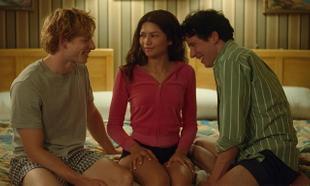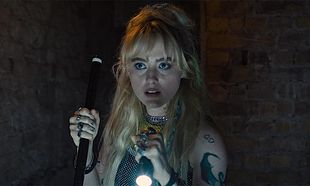That Anton Corbijn bloke - he sure can take a picture. Klaartje Quirins documentary promises to be a peek into the life of this private photographer/director. Fans are given a real insight into how Corbijn's life has influenced his work.
Known for those iconic b&w images of Ian Curtis (and more besides), the Dutch photographer evolved into a music video director with the likes of Echo & The Bunnymen and U2 on his CV; Martin Gore of Depeche Mode felt they weren’t taken seriously until Corbijn started shooting their videos. Bono hopes that one day he'll be the person he is in Corbijn's pictures. Then Corbijn turned to film with the excellent one-two of Control and The American. But what about the man behind the camera? Where does the inherent darkness come from? Klaartje Quirins hopes Corbijn will answer those questions.
And he does. Well, mostly. There's a feeling that Corbijn is keeping all the good stuff for himself. There are moments when the photographer/director stops being cold, distant and standoffish and invites us into his world of doubt and insecurity and loneliness. Rambling about his hometown, where he admits he spend a lonely, isolated childhood, Corbijn sometimes stops and stares into the middle distance as he reminisces about his minister father and what it was like being a child under his roof. The life he describes makes it easy to see why Corbijn gravitated towards Joy Division and Ian Curtis- in one of the numerous intimate moments, he laments that as a human being he felt he 'lagged behind', that he wasn't good at it. It's easy too to see why he chose The American to follow up his debut Control - at the centre of both films are characters defined by their perpetual loneliness. That's Corbijn.
But all too often Quirins lets him off the hook and instead shoots him staring out across a field or a deserted beach or out a window. She seems more concerned with creating an image than the truth. Or maybe she wants to be Corbijn, forever searching for that iconic shot. At one point while walking through a woods, he embarks on an honest and intimate story before remembering he's on camera and stopping his train of thought abruptly with an 'I think we should go in now'. And Quirins lets him! Her handheld camera stops watches as her subject matter, on the verge of admitting something personal, walk away.
What is explored in full is just how highly the likes of Arcade Fire, Lou Reed and Metallica rate him, which is very highly naturally. Less of the that and more of the other would have been the way to go.









































































